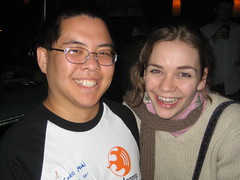A funny thing happens when there’s excess liquidity in a financial market, as has been the cases in the past 6 years due to housing. First, a quick primer. Liquidity is any asset that can be converted to cash quickly and with minimal loss of value. A blue chip stock – like Coca Cola – is a good example of a liquid asset. Barring a complete collapse of the stock market, you can sell your Coca Cola stock relatively quickly with minimal friction. If you had a doctor’s bill you had to pay, you could sell your Coke stock today and have cash to pay with tomorrow.
An illiquid asset is something like a house – you can’t really trade it quickly or easily. It’d take weeks, if not months, to sell that house and get the proceeds to pay off a doctor’s bill.
Excess liquidity is when there are too many dollars chasing too few goods or services. A nation’s central bank can print more money, and when they do, those dollars have to go somewhere. The same is true on Wall Street for investors. A sudden influx of money means they have all this extra money to play with and nowhere to invest it. This creates great investment opportunities, but it also creates a bubble that will eventually burst.
Enter new media. Investors looking for the Next Big Thing have been dumping tons of money into new media companies. Podshow, for example, received 8.8 million in round 1 of its financing and15 million in round 2. Plenty of other companies and web properties have been funded partly through all the play money generated by the excess liquidity on the market.
The market, however, is being called. People are cashing out and it’s causing both a liquidity squeeze and a credit crunch – loans at absurdly low interest rates aren’t available any more, investors aren’t buying portfolios where the value is just a guess, and available cash to play with is going away fast.
What does this mean for you? If you’re working at or running any kind of new media or Web 2.0 company – or a company that relies on them for cash flow – it’s time to bootstrap. Forget VC money, forget private equity, dismiss thoughts of being bought out and everyone getting a fat chunk of investor proceeds, and get down to business. Get cash positive, nuke your debt, and build the business. Not only does your survival depend on it, but so does new media’s.
If you’re a member or a part of a new media company, for example a podcaster at a podcasting network (pick any one), you’d better have a Plan B. Make sure you have archived copies of all your shows on a few data DVDs or an external hard drive. Back up your blog, show notes, and site. Make sure you have copies of everything, including emails, because Plan B assumes that one day, you’ll go to upload your show or edit your blog and there will be a big 404 there – and nothing else.
I’m not saying it’s going to happen like that, but for a couple hours’ work, it doesn’t hurt to plan for it. Anything less than that and you’ll feel smugly overprepared.
What are YOUR plans for Bubble 2.0’s bursting?
